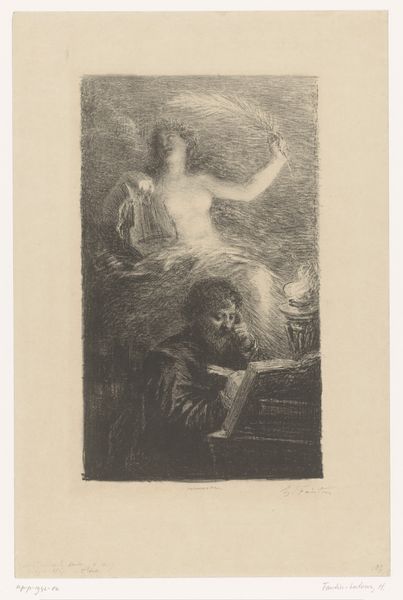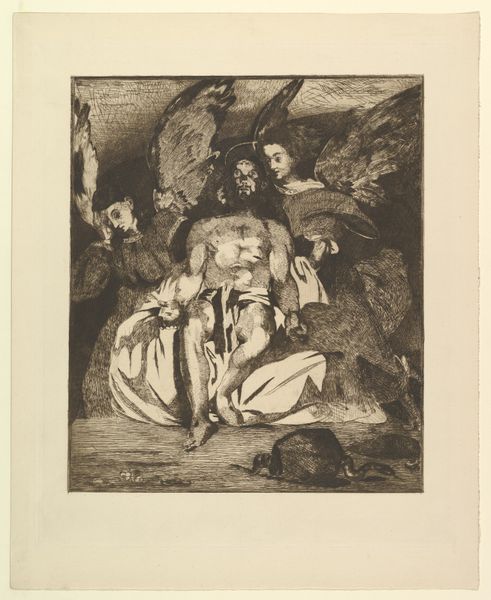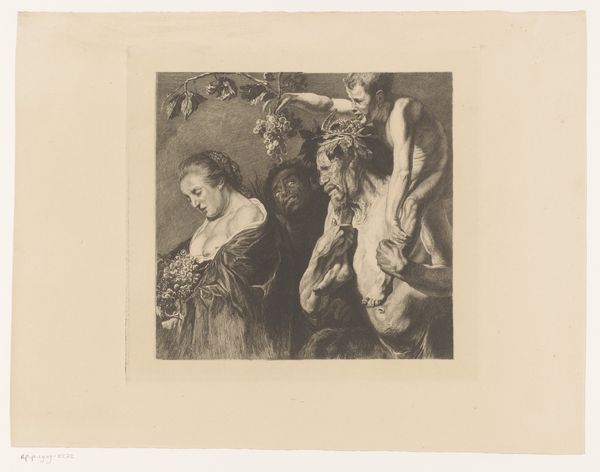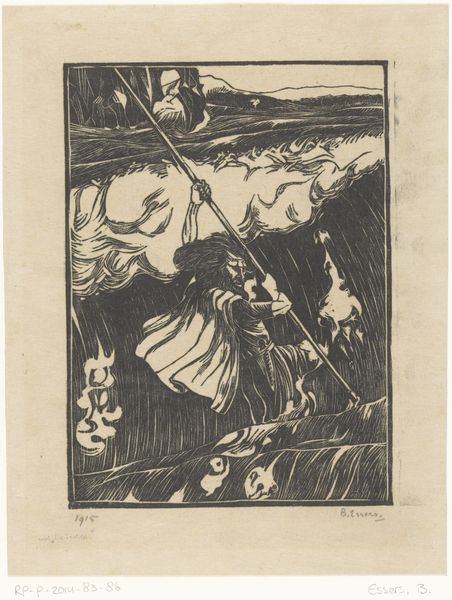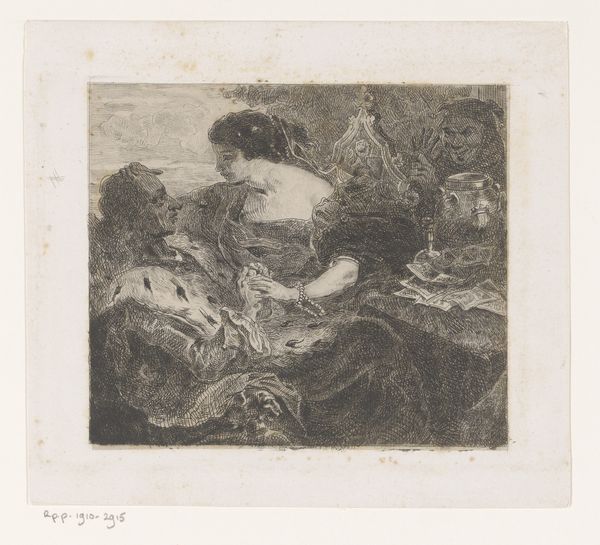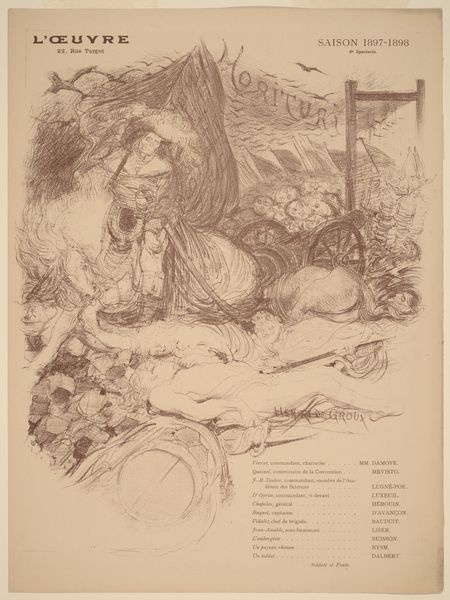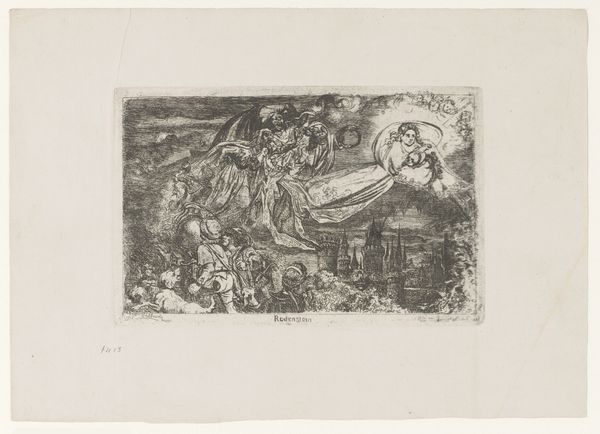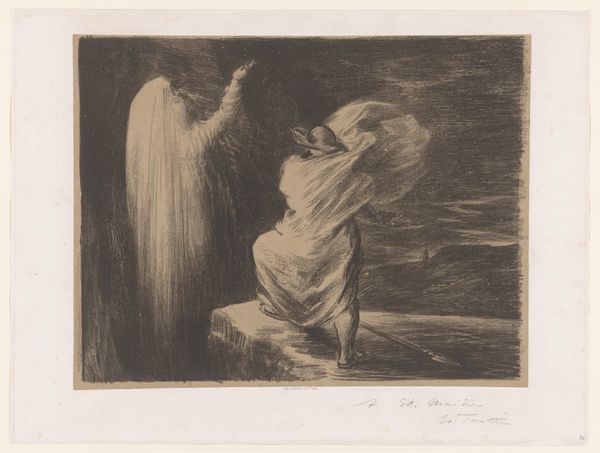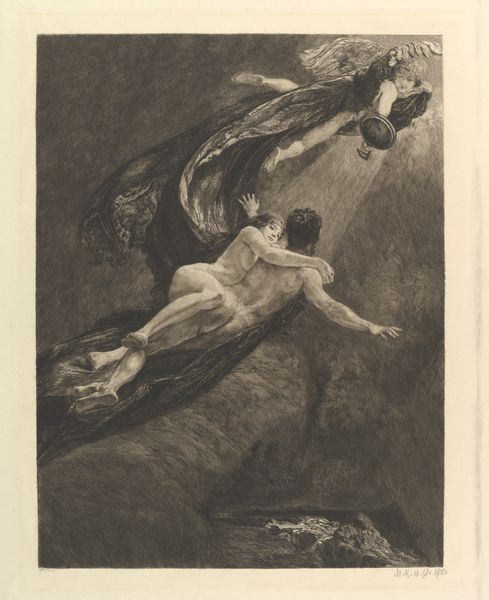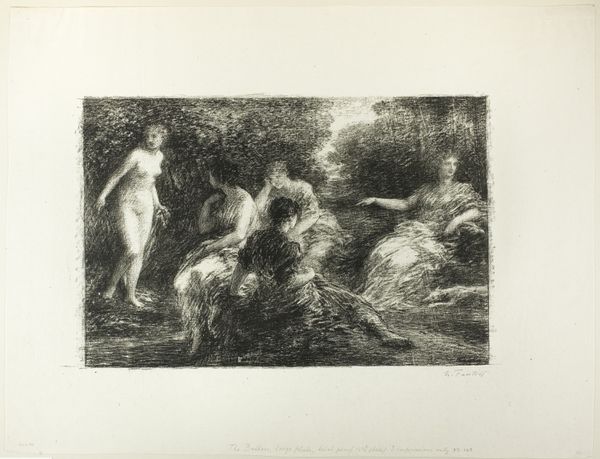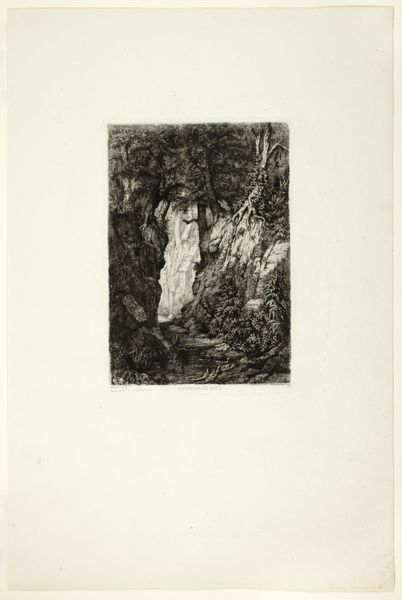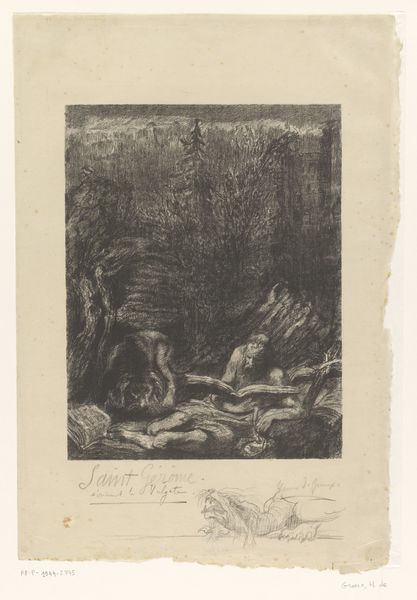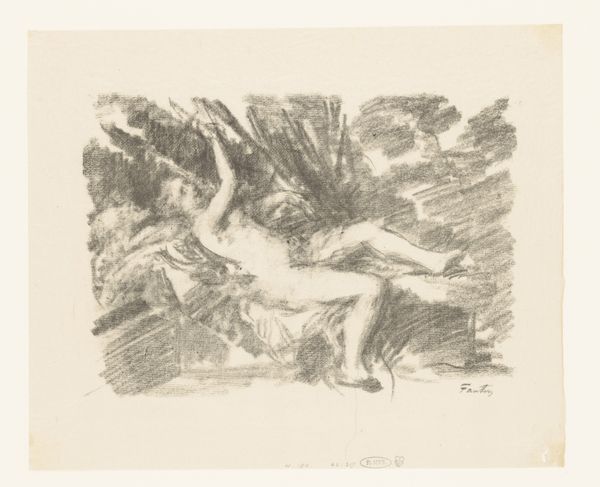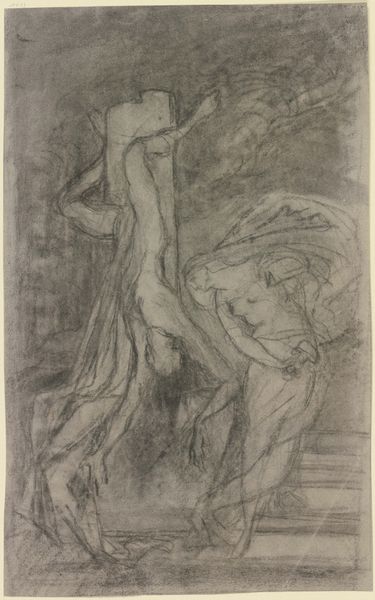
drawing, print, ink
#
drawing
# print
#
figuration
#
ink
#
symbolism
#
nude
Dimensions: height 449 mm, width 325 mm
Copyright: Rijks Museum: Open Domain
Curator: Looking at this image, my first impression is a feeling of being overwhelmed. The sheer density of figures pressing forward, bathed in an ethereal moonlight, is quite striking. Editor: Indeed. We’re looking at a print by Henri de Groux, created around 1894. It’s titled "Half naakte vrouw aanbeden door een groep figuren," which translates to "Half-Naked Woman Adored by a Group of Figures." De Groux, though lesser known today, moved in similar Symbolist circles as figures like Fernand Khnopff and Carlos Schwabe, contributing to the cultural landscape of fin-de-siècle Brussels. Curator: The Symbolist label feels apt. There’s a strong current of psychological intensity flowing through the piece. The lines feel deliberately agitated, contributing to the sense of unease. How much of that do you think is intentional, given the context of its creation? Editor: Absolutely intentional. The Symbolists rejected naturalism and embraced subjectivity. In De Groux's era, there was increasing secularism paired with rising occultism. Here, he's staging an archetypal image—the goddess figure—but her devotees seem more tormented than celebratory. It reflects the era’s deep spiritual anxieties, channeled through potent and at times unsettling imagery. The print seems to address societal views on female power. Curator: The female figure dominates the composition despite being pale and somewhat passively rendered. This speaks to her perceived authority and power that she does not need to act on. Her presence is command enough. Do you think the monochromatic medium plays a role in how we read it? Editor: Undoubtedly. The stark contrast heightens the drama and reduces any potential for visual distraction. It’s ink on paper, a simple yet effective way to strip away excess and leave only the raw emotional and psychological core. Curator: It is almost theatrical. It’s interesting how De Groux leverages those technical limitations. It is reminiscent of stage lighting where one can play with the balance of chiaroscuro to set the stage. I can see the print as a stage set depicting these ideas through a stark and highly contrasted scene. I come away feeling deeply affected by both its overt drama and quieter subtleties. Editor: I agree. De Groux really captured that late 19th-century zeitgeist, didn't he? It gives us such insight into their social anxieties about how art and artists shape our social and emotional realities, even today.
Comments
No comments
Be the first to comment and join the conversation on the ultimate creative platform.
